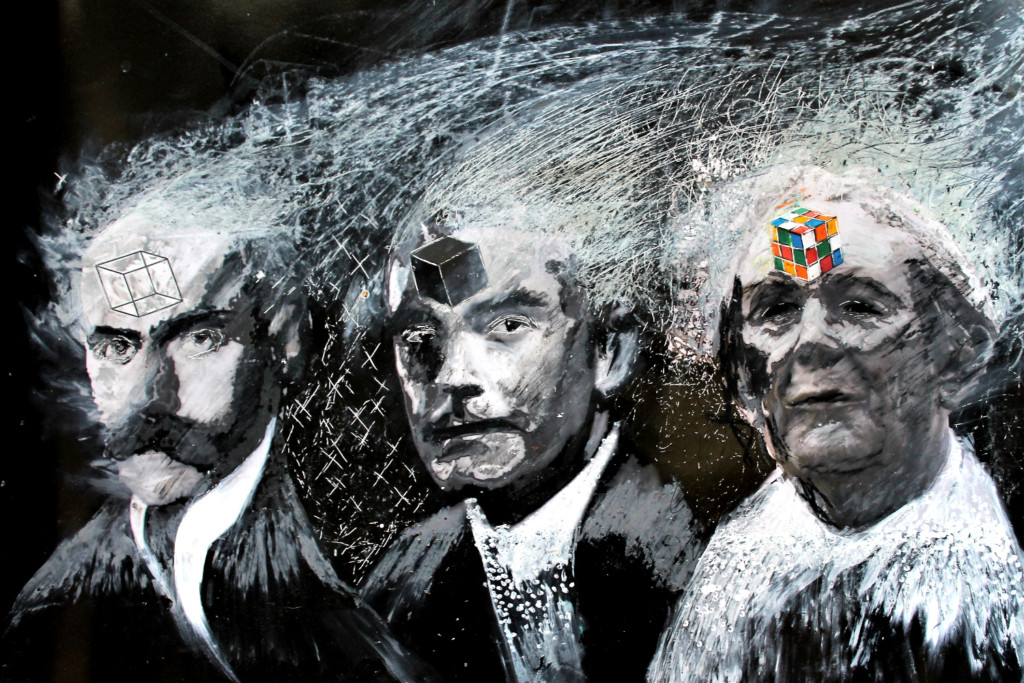Mixed Media, 45 x 30 cm
This picture represents three important theories of psychology about the human mind. I have chosen them, because although originated in the same discipline, they define the human mind very differently. For all three, the brain remains a mystery understood only by metaphors.
As a representative of Gestalt theory, Max Wertheimer is depictured. According to Gestalt psychology, perception shapes the senses. That is why Wertheimer wears a “Necker cube”, a classic example for multistable perception, which was used to illustrate one of the key principles of gestalt systems, that is emergence, reification, multistability, and invariance.
Burrhus Frederic Skinner represents behaviorism according to which the human mind is like a black box. Input (stimulus) and output (response) are observable, but you can’t see inside. To study the organism, one has to selectively present stimuli and to analyze the responses. Skinner invented “the Skinner Box” to study operant conditioning. That is the meaning of the black cube on Skinnerʼs head.
Jean Piaget represents constructivism according to which environmental information and individual ideas interact and form internalized structures. New information is assimilated by incorporating it into an existing framework, known as internal representations, without changing that framework. The depictured 3-D combination puzzle “Rubik's Cube” is a symbol for this process.
The Neuro Bureau
neuro-collaboration in action

